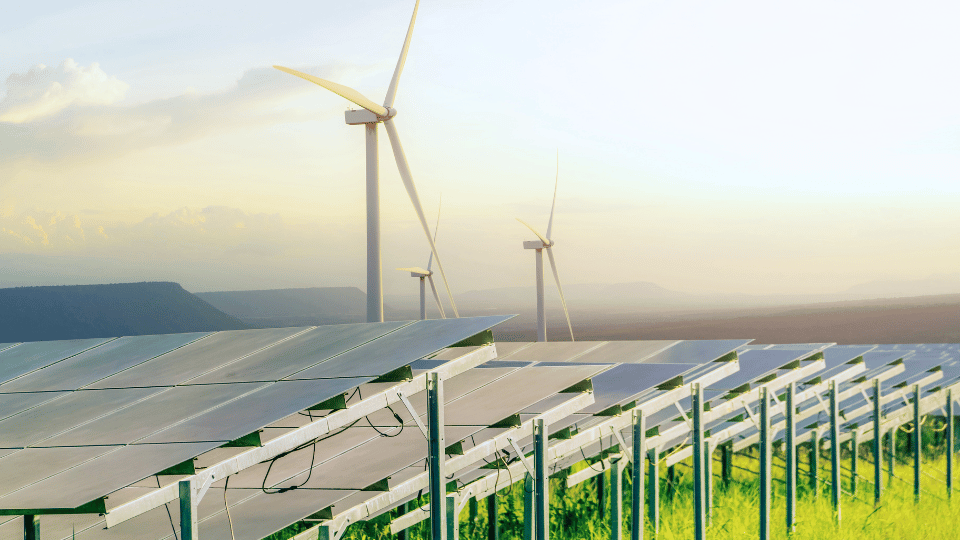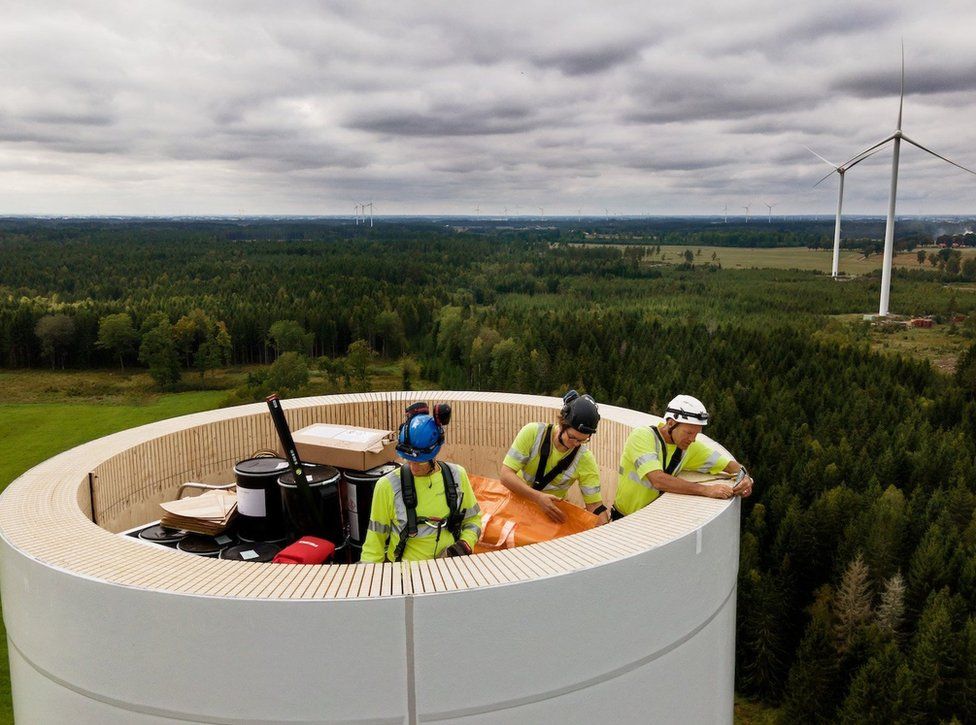Top Five Renewable Energy Projects Making a Global Impact
25 Jul, 202314:10As the world becomes increasingly aware of the urgent need to transition to renewable energy...

As the world becomes increasingly aware of the urgent need to transition to renewable energy sources, large-scale renewable energy projects have emerged as game-changers in the global fight against climate change. These mammoth initiatives are reshaping the energy landscape and significantly impacting a global scale.
From wind farms that span thousands of acres to solar parks that harness the sun's power, these projects are revolutionising how we produce and consume energy. This article will explore some of the most significant renewable energy projects worldwide, showcasing their innovative technology, impressive scale, and positive environmental impact.
The importance of renewable energy for a sustainable futureIn today's world, sustainability and environmental consciousness have become crucial factors in our fight against climate change. Renewable energy has emerged as a powerful solution as we strive to reduce our reliance on fossil fuels.Companies and governments worldwide have recognised the importance of transitioning to cleaner sources of energy, and they are leading the way in the development of vast renewable energy projects.
Colossal wind farms, with hundreds of towering turbines, are being built in locations with strong and consistent winds. These wind farms can generate substantial clean electricity, powering thousands of homes and businesses.Similarly, sprawling solar installations are being set up in areas with abundant sunlight, harnessing the power of the sun to produce renewable energy on a massive scale. These renewable energy projects are transforming our energy landscape and making a significant global impact.
By generating clean energy, they are reducing greenhouse gas emissions and mitigating the harmful effects of climate change. Furthermore, these projects create job opportunities and drive economic growth in the renewable energy sector. They are not only addressing environmental concerns but also contributing to sustainable development.
Source - Our World In Data
The development of renewable energy projects requires visionary companies and governments who are committed to promoting sustainable practices. These stakeholders understand the importance of investing in renewable energy technologies and infrastructure. They recognise that transitioning to cleaner energy sources is necessary for environmental reasons, achieving energy security, and reducing dependence on fossil fuels.
Mohammed bin Rashid Al Maktoum Solar Park, UAE
The Mohammed bin Rashid Al Maktoum Solar Park in Dubai, UAE, is the world's largest single-site solar park, spread across 30 square miles of Seih Al-Dahal. The project is being built and added to in phases, with the first phase commissioned in 2013. While the region is commissioning several renewable energy projects to meet its renewable energy goals, this park is easily the largest.
Once completed in 2030, the project has a planned production capacity of 5000MW, with an annual saving of over 6.5 million tons of carbon emissions.
The region aims for 100% of energy production capacity from renewable sources by 2050 through The Dubai Clean Energy Strategy 2050 and the Dubai Net Zero Emissions Strategy 2050. The solar park is one of the key projects delivering on this strategy.
The project is delivering some world-firsts; aside from being the largest single-site in the world, it has already broken records twice for energy production costs, and phase 4 of the project, due in 2023, includes the tallest photovoltaic solar tower in the world.
Why is this important?
The Mohammed bin Rashid Al Maktoum Solar Park is part of the UAE's strategies to become one of the world leaders in high-tech renewable energy. The pressures of the climate crisis mean that both domestic use and export of fossil fuels from the region will diminish over time, and the industry needs to adapt to global changing demand. Harnessing the region's abundant solar energy provides the opportunity to develop and export Solar PV technology, serve regional power needs, and fuel innovation in net-zero technology.
Hornsea Project Two, UK
The Hornsea Two project, located in the North Sea off the coast of Yorkshire in the UK, is the world's largest offshore wind farm. The project, operated by Danish renewables company Ørsted, currently generates over 1300MW of renewable energy, powering over 1.4 million UK homes.
Hornsea Project Two is equipped with 165 Siemens Gamesa 8MW turbines, harnessing the power of the North Sea winds to generate electricity.
Looking ahead, Hornsea Project Two is not the final frontier for offshore wind in the North Sea. Hornsea Four, the fourth phase of the wind project, has received final approval from British government officials. This phase is expected to bring the power generation of the Hornsea farm to 2.6 GW of renewable energy, with 180 wind turbines.
Why is this important?
Renewable wind energy sits alongside solar as the most significant contributor to the renewable energy mix, and the Hornsea project is one of the most essential renewable projects in the UK. Hornsea is critical to the energy security of the UK, reducing its dependency on imported fossil fuels while reducing the country's dependence on oil and gas in line with nationally agreed climate goals.
Gansu Wind Farm, China
In terms of onshore wind, Gansu Wind Farm in China is the largest site in the world. Constructed in the Gobi Desert near Jiuquan in Gansu province, it was commissioned in 2009 and currently produces 8GW of renewable energy. When complete, the farm will consist of 7000 wind turbines with a combined output of 20GW.
The development of the Gansu Wind Farm began in 2005 as part of a strategic initiative by the Chinese government to invest in renewable energy sources. The Renewable Energy Law, implemented in the same year, aimed to achieve 200 GW of installed wind capacity in the country. The project's first phase was completed in 2010, with 3,500 turbines installed, totalling a capacity of 5.16 GW.
Why is this important?
China is leading the way globally when it comes to renewable energy. The country is set to double its utility-scale solar and wind power capacity by 2025, five years ahead of its 2030 target of 1200GW of power generated by renewables. There are still challenges; much of the country is still heavily reliant on coal energy, and the Gansu site is over a thousand miles away from the cities that would benefit most from the energy output. As a result, the wind farm is currently operating at 40% of its projected capacity, as the country is currently unable to feed Gansu's total output into its existing energy network. The biggest challenge for China is integrating this energy, but in doing so, they are establishing themselves as world leaders in renewable energy production.
NEOM Green Hydrogen Project, Saudi Arabia
The NEOM Green Hydrogen Project is a joint venture between ACWA Power, Air Products and NEOM to develop the world's largest green hydrogen facility at the Neom site in Saudi Arabia. The NEOM site is a mammoth project incorporating renewable energy into an innovative city-building approach and is already at the forefront of global renewable energy development.
With a total investment value of $8.4bn, the NEOM Green Hydrogen Company (NGHC) has secured financial close by signing agreements with 23 local, regional, and international banks and investment firms.
The project will pioneer and accelerate the adoption of green hydrogen as the plant of its kind in the world, aiming to produce 500 tons per day of carbon-free hydrogen by the end of 2026.
The NEOM Green Hydrogen Project aligns with the vision of NEOM and Saudi Arabia's sustainable development goals. By leveraging renewable energy sources and producing carbon-free hydrogen, the project contributes to the decarbonisation of the energy sector and supports Saudi Vision 2030. It represents a significant step towards a carbon-free future and establishes Saudi Arabia as a global leader in the hydrogen revolution.
Why is this important?
The technology behind green hydrogen is still in development, and one of the significant challenges is producing the energy needed to create hydrogen through electrolysis. While many projects rely on fossil fuels and natural gas for this energy, the Neom project uses renewable energy to develop a zero-carbon pipeline for production. Green hydrogen itself is a clean fuel, only producing water as waste. It can also be transported more easily than other forms of renewable energy, making it a highly viable export fuel source. Between the country's climate goals, the ambitious net-zero Neom development, and the opportunities for serving the global energy transition, the Neom project is critical for meeting the UAE's energy strategy.
Pinnapuram Integrated Renewable Energy Project, India
In February 2018, Greenko Group signed a Memorandum of Understanding (MoU) with the Government of Andhra Pradesh, signalling their commitment to developing the Pinnapuram IREP. The project's first phase, approved by the government, will consist of 1GW of solar power, 600MW of wind power, and a standalone pumped storage hydroelectric power (HEP) facility with a storage capacity of 10.8GWh, on 1929ha of land at Pinnapuram village Kurnool district, Andhra Pradesh.
The subsequent phases will see an increase in capacity to 3GW of solar power, 2GW of wind power, and 2.4GW of HEP, dependent on technological feasibility and site viability. Greenko is initially developing the pumped storage HEP, with expected completion in 2025.
One of the key highlights of the Pinnapuram IREP is the pumped storage hydroelectric power component. This facility, with an installed capacity of 1.2 GW, will utilise the natural topography of the region to store and generate electricity. It will consist of two reservoirs, each with a capacity of 1.3 TMC (thousand million cubic feet), created by rockfill embankments and dams. Water from the existing Gorakallu reservoir will fill these new reservoirs, ensuring efficient utilisation of water resources.
Why is this important?
The Pinnapuram IREP is about generating renewable energy and emphasises energy storage's importance. With its pumped storage hydroelectric power component, the project will provide schedulable power to meet the varying demands of consumers. The stored energy can be released during peak load periods, ensuring a stable and reliable power supply. Integrating renewable energy with storage is a significant step towards overcoming the intermittency challenge of solar and wind power.
Prospects and advancements in renewable energy projects
It's clear that over the next decade, the demand for renewable energy and the projects that supply it will continue to grow. All the projects mentioned above are multi-phased, and most are still in development, meaning their full potential has yet to be realised. In addition, more and more renewable projects are being commissioned and planned for the next decade, many combining solar, wind and energy storage technology.
One of the biggest challenges of renewable energy is that it's intermittent. Existing distribution grids, built with fossil fuel and nuclear plants in mind, are not designed for fluctuating supply. Projects like the Gansu wind farm are unable to reach their full potential due to the existing infrastructure they serve. This is where the growing battery storage industry comes in.
Renewable energy companies are investing heavily in battery storage facilities and technology, which store energy from renewable generators until the grid is ready. As lithium-ion battery technology improves and more advanced alternatives to lithium are researched, the ability to store energy from renewable sources increases, unlocking the full potential of the large-scale projects mentioned in this article.
Solar and wind energy are just two parts of the energy mix; advancements in green hydrogen production are producing promising results, with companies aiming to scale and improve the technology, which results in lower energy usage to produce the hydrogen and lower production costs.
While solar and wind dominate the renewable energy mix due to their cost versus energy output, there are other innovations in renewable energy. Hydropower is still an essential part of the renewable landscape. Countries like Pakistan, India and China are investing in hydropower in the next five years. Geothermal energy is still an important part of the energy mix, as while it is more resource intensive to build, projects take far less space than solar or wind farms, and recent advancements in geothermal technology have unlocked more potential sites than ever before.
NES Fircroft and supporting the Renewable Energy industry
We partner with our clients offering a depth of knowledge, a global network of talent and local market expertise that can deliver comprehensive Renewables workforce solutions. Our dedicated Renewable Energy Recruitment teams understand the sector's challenges in-depth. They can mine our extensive global database to build you the talent pool you need for the future.
We are also proud to be a Global Wind Energy Council member. We deliver workforce solutions for various crucial wind projects worldwide, and we're excited to work amongst the thousands of GWEC members to continue communicating the benefits of wind power and support clients and candidates operating within the industry.
If you have a Renewable Energy staffing requirement, contact or search our renewable energy jobs to find your next position.












